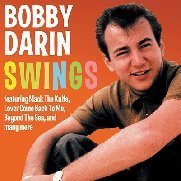A string trimmer, also known by the portmanteau strimmer and the trademarks Weedwacker, Weed Eater and Whipper Snipper. is a garden tool for cutting grass, small weeds, and groundcover. It uses a whirling monofilament line instead of a blade, which protrudes from a rotating spindle at the end of a long shaft topped by a gasoline engine or electric motor.
String trimmers are commonly used for cutting low foliage near obstacles or on steep or irregular terrain. Most professional-grade line trimmers can accept attachment blades to be used as brush cutters for more dense vegetation.
String trimmers are commonly used for cutting low foliage near obstacles or on steep or irregular terrain. Most professional-grade line trimmers can accept attachment blades to be used as brush cutters for more dense vegetation.
History
The first brush cutter was produced in Japan in 1960 by Echo. The U.S. string trimmer was invented in the early-1970s by George Ballas of Houston, Texas, who conceived the idea while watching the revolving action of the cleaning brushes in an automatic car wash. His first trimmer was made by attaching pieces of heavy duty fishing line to a tin can bolted to an edger. Ballas developed this into what he called the "Weed Eater", since it chewed up the grass and weeds around trees.
The word "strimmer" is correctly a trade name for a particular make of string trimmer, but it is often used as a generic for any string trimmer. From it has been backformed the colloquial verb "to strim".
Terminology by country
The terminology used to refer to string trimmers varies by country and sometimes state:
- South Africa — Line trimmer or brushcutter
- Australia and Canada — whipper snippers
- UK / Ireland - Strimmer, Grass trimmer or brushcutters
Design
A string trimmer works on the principle that a line spun fast enough on its center stiffens by centrifugal force; the faster the hub turns, the more rigid the line. Even round-section nylon line is able to cut grass and slight, woody plants quite well. Some monofilament lines designed for more powerful cutters have an extruded shape, like a star, that helps the line slash the material being cut; the line is thus able to cut quite large woody plants (small shrubs) or at least girdle them effectively. These lines make solid disks less necessary for tough jobs.
The line is hand-wound onto a reel before the job is started, leaving both ends extending from the reel housing. The motor turns the reel and the line extends horizontally while the operator swings the trimmer about where the plants are to be trimmed. The operator controls the height at which cutting takes place and can trim down to ground level quite easily.
As the line is worn, or breaks off, a bump feed string trimmer the operator knocks the reel on the ground so a release mechanism allows some of the line in the reel to replace the spent portion. Newer models "auto-feed", where a small cutter ensures the exposed length does not exceed what can be swung efficiently. Newly extended line operates more efficiently because of its heavier weight and surface effects. The speed of the spinning hub is controlled by a trigger activated throttle on the handle.
A fixed line string trimmer has a trimmer head that takes pre-cut line inserts. There is no wound spool of line in the trimmer head, the user instead feeds the pre-cut line in to the appropriate slots, making the trimmer easier to feed line into and troubleshoot than a bump feed system.
For vertical cutting the whole machine can be tilted or some trimmers allow the head to be adjusted at different angles.
String trimmers powered by an internal combustion engine have the engine on the opposite end of the shaft from the cutting head, while electric string trimmers typically have an electric motor in the cutting head, but there are other arrangements such as where the trimmer is connected to heavy machinery and powered by a hydraulic motor.
The head contains a safety shield on the user side and a rotating hub which may also be called a head or spool. Disadvantages of a gasoline-powered string trimmer include its greater weight, the need to refuel, and the significant vibration that carries throughout the device, both of which interfere with its maneuverability and contribute to muscle fatigue. Advantages include complete mobility and higher maximum power.
Large trimmers, used for cutting thick roadside grass and weeds in large areas, are both heavier and more powerful. Some are fitted with a harness to spread weight onto the shoulders. Often referred to as brush cutters, these often mount straight or circular metal blades instead of monofilament line.
Safety concerns
String trimmers can send debris flying randomly at high speed. It is typical for the user to wear either safety glasses or a suitable visor to protect their eyes, but passersby are still at risk. The debris can even damage cars and buildings, with a particularly high risk of broken glass.
Chain-link flail rotors, and any other trimmer head with linked metal parts, were prohibited from sale in the EU after a fatal accident in 2010.
- 1 1/4 cups granulated sugar
- 1/2 stick (1/4 cup) butter, softened, plus another 1/2 stick butter
- 1 cup sour cream
- 2 eggs
- 1 1/2 cups mashed ripe bananas (about 4 bananas)
- 3 teaspoons vanilla extract, divided
- 2 1/4 cups all-purpose flour
- 1 teaspoon baking soda
- 1/2 teaspoon salt
- 1 cup light brown sugar
- 1/4 cup milk
- 2 cups confectioners' sugar
- Preheat oven to 350º. Coat a 9- x 13-inch baking dish with cooking spray.
- In a large bowl with an electric mixer, beat granulated sugar, the 1/2 stick softened butter, sour cream, and eggs until creamy. Beat in bananas and 2 teaspoons vanilla. Add flour, baking soda, and salt; mix well. Pour into baking dish.
- Bake 30 to 35 minutes, or until toothpick inserted in center comes out clean. Let cool.
- In a small saucepan over medium heat, melt remaining 1/2 stick butter. Stir in brown sugar and milk and bring to a boil, stirring constantly. Reduce heat to low and cook 2 minutes. Remove from heat and place in a large bowl. Let cool 15 minutes.
- Add confectioners' sugar and remaining 1 teaspoon vanilla to bowl and beat with electric mixer until smooth. Spread frosting over cake and serve.

1944 – George Lucas, American director
1984 – Mark Zuckerberg, American computer programmer and internet entrepreneur, co-founder of Facebook













No comments:
Post a Comment